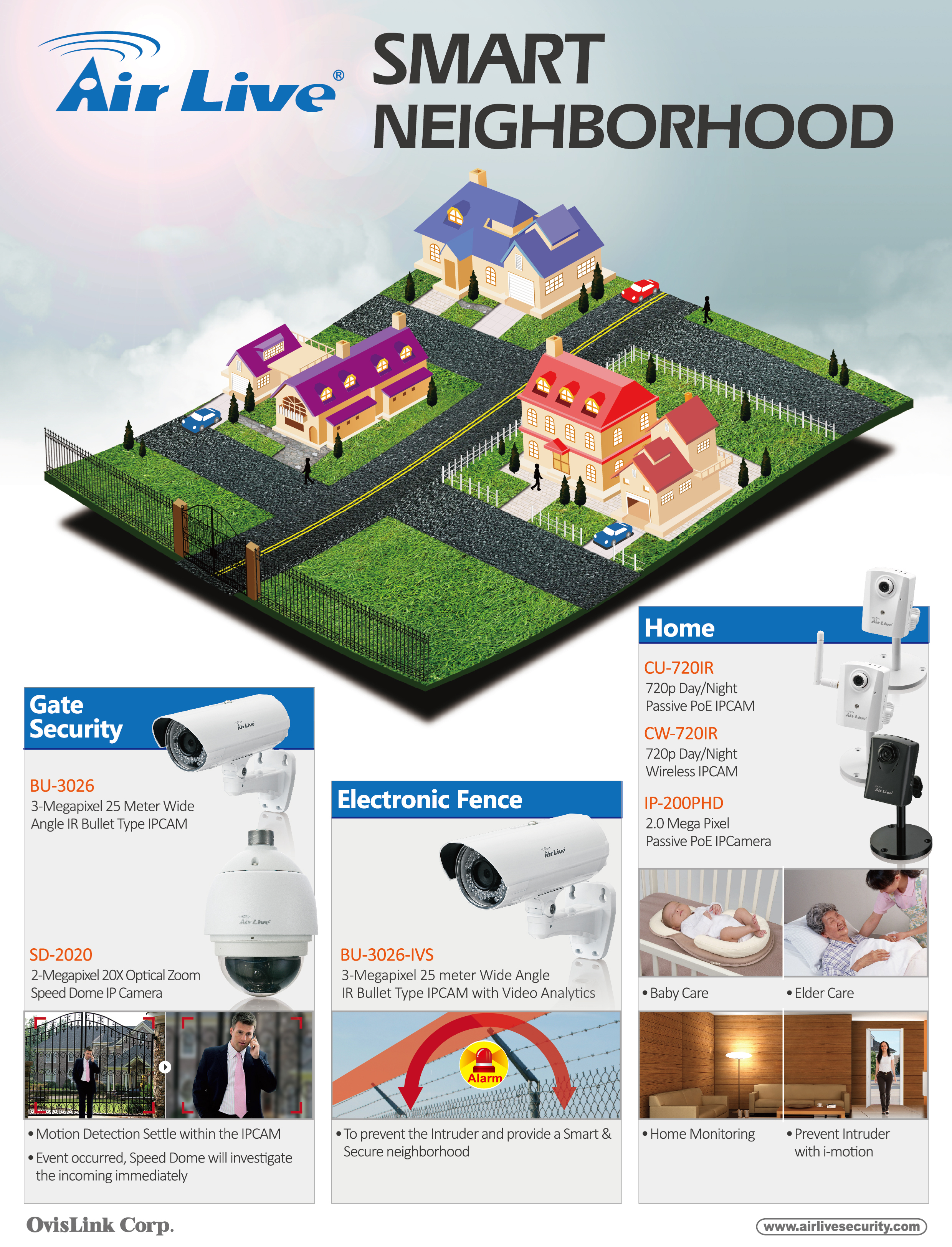Founded in 1993, OvisLink Corp. is a leading Taiwan-based networking solution provider, selling its products under its own brand AirLive. Started out as a wireless product maker, the company gradually expanded into the development of surveillance cameras.
Founded in 1993, OvisLink Corp. is a leading Taiwan-based networking solution provider, selling its products under its own brand AirLive. Started out as a wireless product maker, the company gradually expanded into the development of surveillance cameras. Today, it designs some of the most avant-garde smart cameras for both the home and professional markets. The MD-3025-IVS 3-Megapixel Mini-dome IPCAMs are few examples of their latest creations. When asked about the design, Albert Yeh, VP of OvisLink said they are direct results of AirLive's design language, in which: “ergonomics and small-form factor” are heavily emphasized. “The AirLive 3-Megapixel IPCAM is currently the smallest of its kind in the world when considering its size,” Dr. Yeh said. “They can be mounted anywhere, including buses and trains.”
The AirLive smart camera range can be separated in two categories: home (DIY) and professional use. Although across the US – currently the world's biggest smart home market – DIY smart home cameras still holds the reign, Dr. Yeh said they still focus heavily on professional, industrial-grade cameras which are catered solely for the installer market.
“Some have been focusing on smart cameras for nearly a decade, but they never really took off because initially the majority of them were catered only to luxury homes. However, prospect-wise, they still look promising.”
As more companies continue to hop on the smart home bandwagon, forecasters are expecting the market to be influenced by both the sunny skies and storms depending on the product's integration of function and application. Carving a design concept is the mindset of the mainstream. “We design products that are coherent with the environment and their surroundings,” said Dr. Yeh.
ADDING INTELLIGENCE
According to Dr. Yeh, smart home cameras have two critical functions: monitor and control. While the average user may already know pet and baby watch, or energy consumption control, these functions are nothing new when it comes to surveillance cameras.
The company is integrating “intelligence” to the mini-dome camera line by incorporating new features to their bundled software. The AirLive smart software has built-in Intelligent Video Analytics that features: Face detection & recognition, iMotion detection, Trip zone, Object counting, and e-Fence.
As smart cameras continue to evolve and improve with time - new CPUs, ICs and image sensors, - the technology gap will remain tight amongst competitors because everybody is churning out cameras with near or similar hardware specs. “Expertise is not about having the best components, but in component tuning,” Dr. Yeh said.
OvisLink is currently looking into developing intelligent cameras with IR control. They will mostly likely remain a compact-form factor similar to the mini-dome line.
NOT IN THE CLOUD
 Although the Cloud's growing clout may threaten to stifle growth across the traditional PC and notebook markets, especially for PCs DRAM, displays and CD-ROMs, smart camera makers have yet to totally embrace the services provided with the Cloud.
Although the Cloud's growing clout may threaten to stifle growth across the traditional PC and notebook markets, especially for PCs DRAM, displays and CD-ROMs, smart camera makers have yet to totally embrace the services provided with the Cloud.
“One major issue with the Cloud is that it cannot take real-time recording,” Dr. Yeh said. “Also, for smart cameras, storage capacity is an issue because backing up video data in the Cloud is limited.”
The Cloud storage services currently available (Google Drive, Dropbox, etc.) are offered for free but with limited storage capacity. For applications that require 24-hour live recording, this would make it hard for camera makers and users to swallow. Dr. Yeh said that they prefer to use local storage (NVR, NAS or SD card), then retrieve data (video) from the remote end.
4K, H.265 AND OBSTACLES
When asked about if AirLive will adopt H.265 in their future range of smart cameras, Dr. Yeh said the current H.264 video codec, which is good for achieving 720p resolution, covers the majority of the world's users. Furthermore, adopting H.265 would mean to create smart cameras at a higher expense, even though H.265 is important for future applications because of 4K video. But for smart home users, H.265 is not attainable for the masses.
“The problem is not in technology, but with integration,” said Dr. Yeh. The biggest obstacle for makers is regarding interface adoption because currently there is no common ground or alliance that is similar to the smartphone and tablet sectors. The solution is not about hoping for the best platform to prevail – ZigBee, Z-Wave, or others – but for a big-brand company to tie the alliance together, said Dr. Yeh.
